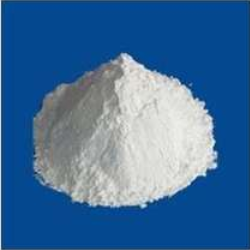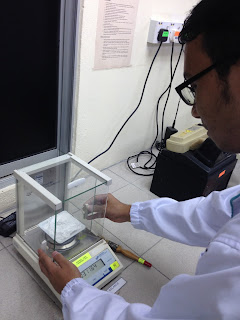TITLE:
Particle Size
and Shape Analysis Using Microscope
DATE:
17th November
2014
OBJECTIVE:
1. To
analyze and interpret the size and shape of particles with different samples.
2. To
observe and compare the different size of particles under microscope for each
samples.
INTRODUCTION:
In achieving optimum production of
efficacious medicines, the dimensions of particulate solids is one of the
dominant factor. When drug is synthesized and formulated, the particle size of
drug and other powder is determined and this influences the subsequent physical
performance of the medicine and the pharmacological of the drug. This is
because powder with different particle sizes have different flow and packaging
properties, which alter the volumes of powder during each encapsulation or
tablet compression event. For example, the particles which are having small
dimensions will tend to increase the rate of solution.
In order to obtain equivalent diameters, the particle size of powder
have to be analyzed and interpreted. The bulk properties such as particles size
and shape of the powder are determined by using the size of particles. There
are various method that can be used to determine particle sizes and shapes.
Microscopic analysis is the most widely used method in this case. It can
determine the diameter, shape, and surface area that cannot be determined with
the bare eye.
In this experiment, different sizes
and shapes of sands are used as analogue to powder. Various type of sands (150µ,
355µ, 500µ, 850µ, mixed) and two different powders (MCC and lactose) are given
to be analyze. Sand is a naturally occurring granular material composed of
finely divided rock and mineral particles. Sand is used in this experiment as
it is inert, easy to obtain and economical. It exists in various different
sizes ranging from 0.0625 mm (or 1⁄16 mm) to 2 mm. Fine sand is defined as particles between
0.02 mm and 0.2 mm while course sand as those between 0.2 mm and 2.0 mm.
LISTS OF APPARATUS
Light Microscope
Weighing Boat
Spatula
Glass slide and
cover slip
LISTS OF CHEMICALS
Sands( 150µ,
355µ, 500µ, 850µ, mixed )
Lactose powder
MCC powder
PROCEDURE
1. Sands with
sizes of 150µ, 355µ, 500µ, 850µ, mixed, lactose and MCC are placed in the
different weighing boats using spatula. The weighing boats are labeled
according to the content.
2. The
microscope was set up and ready to be use.
3. 150µ sand is scattered
and made fairly flat on the surface of the glass slide, covered with the cover
slip. The particles were
separated one with another to prevent from redundant particle on one place.
4. The sand was
observed under the microscope using 4x100 magnification and 10x 100
magnification.
5. The particles
were observed microscopically and the shape was determined.
6. The shape and
size of particles had been drawn and analyzed
7. Steps 3 to 6
were repeated by using 355µ, 500µ, 850µ, mixed sands, lactose and MCC powder.
RESULTS
150 mic
Magnification : 4x100
Magnification : 10x100
355 mic
Magnification:
4x100
Magnification:
10x100
500 mic
Magnification:
4x100
Magnification:
10x100

850 mic
Magnification:
4x100
Magnification:
10x100
Various Size
Magnification:
4x100
Magnification:
10x100
MMC
Magnification:
4x100
Magnification:
10x100
Lactose
Magnification:
4x100
Magnification:
10x100
DISCUSSION
Different types of
sands and powders including 150 micron sands, 355 micron sands, 500 micron
sands, 850 micron sands, sands of various sizes, MCC power, and lactose powder
were examined by using light microscope. Light microscope was used in this
experiment because the samples analyzed have particle size range from 0.1
micrometer to 100 nanometers.
The experiment was
carried out to determine the size and shape of the different samples. From the
observation, the shape of the sand particles is asymmetry and irregular whereas
the shape of powders is almost constant and regular for all particles. The
particle shape can be categorized by its sphericity, and characterized into
very angular, angular, sub-angular, sub-rounded, rounded and well-rounded.
It is impractical to
determine the particle size for more than one dimension as the particles are
irregular with different number of faces. The size analysis is carried out on
two-dimensional image of particles which are generally assumed to be randomly
oriented in 3-dimensional. Therefore, the solid particle is approximate to a
sphere and the particle size is analyzed by determining its equivalent diameter.
There are different types of equivalent diameters which include projected
perimeter diameter, projected area diameter, Feret’s and Martin’s diameter. The
projected perimeter diameter is based on a circle having the same perimeter as
the particle. The projected area diameter is based on a circle of equivalent
area to that of the projected image of a solid particle. Feret’s diameter is
the mean distance between two parallel tangents to the projected particle
perimeter while Martin’s diameter is the mean chord length of the projected
particle perimeter.
There are precautions
must be taken in this experiment. All the observations should be done under the
same magnification so that the comparison between the different samples in
terms of size and shape can be done. During the preparation of the slide, the
sand particles is spread and dispersed evenly on the slide until it appeared as
a thin layer to avoid agglomeration.
QUESTIONS
1) Explain in brief the various
statistical methods that you can use to measure the diameter of a particle.
The various statistical
methods that use to measure the diameter of particles are projected perimeter
diameter, projected area diameter, Feret’s diameter and Martin’s diameter. The
projected perimeter diameter is based on a circle having the same perimeter as
the particle. The projected area diameter is based on a circle of equivalent
area to that of the projected image of a solid particle. Both of these methods are independent
upon particle orientation and
only take into account of 2 dimensions of the particle. Feret’s diameter is the
mean distance between two parallel tangents to the projected particle perimeter
while Martin’s diameter is the mean chord length of the projected particle
perimeter. Both of these methods consider the orientation of the particle. Both
Martin’s diameter and Feret’s diameter are used in particle size analysis by electron
microscopy
2) State the best statistical method for
each of the samples that you have analyzed.
The best statistical
method is Feret’s and Martin’s diameter.
CONCLUSION
The shape of the both MCC and lactose
powder is regular whereas the shape of various types of sands is irregular. The
particle size of the samples in ascending order is lactose powder, MCC powders,
150 micron sands, 355 micron sands, 500 micron sands, 850 micron sand. In sands
of various sizes, some of the sands having the largest size among all types of
sands.
REFERENCE
1) Pharmaceutics, The science of dosage form design
(2nd Edition) Michael E.Alton Edinburgh London New York Philadophia St Louis
Sydney Toronto 2002.
2)
Physicochemical Principals of Pharmacy (2nd Edition) AT Florence and D.Attwood,
The Macmillan Press Ltd.

























